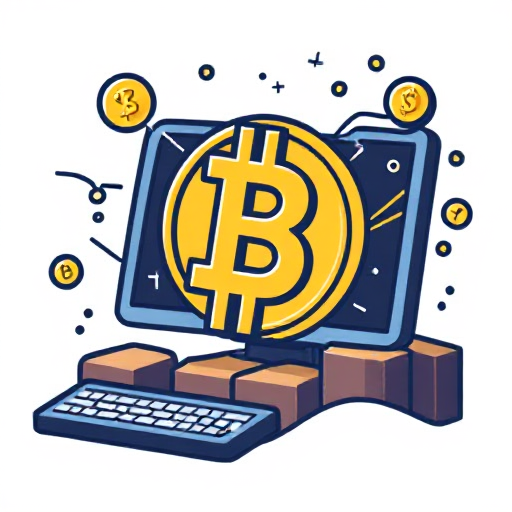In recent years, the financial landscape has experienced a seismic shift with the emergence of Decentralized Finance (DeFi). This innovative movement leverages blockchain technology to create an open, permissionless financial ecosystem that challenges traditional financial systems. As DeFi continues to gain traction, it is essential to understand its implications, benefits, challenges, and the potential it holds for reshaping the future of finance.
What is Decentralized Finance (DeFi)?
Decentralized Finance, or DeFi, refers to a suite of financial services built on blockchain technology that operates without intermediaries such as banks or financial institutions. By utilizing smart contracts—self-executing contracts with the terms of the agreement directly written into code—DeFi platforms enable users to engage in various financial activities, including lending, borrowing, trading, and earning interest on their assets.
Key Components of DeFi
- Smart Contracts: Smart contracts are the backbone of DeFi. They automate and enforce agreements between parties without the need for intermediaries, reducing the risk of fraud and increasing transparency.
- Decentralized Applications (dApps): DeFi platforms are typically built as decentralized applications (dApps) on blockchain networks like Ethereum. These dApps provide users with access to various financial services, such as decentralized exchanges (DEXs), lending platforms, and yield farming protocols.
- Liquidity Pools: Liquidity pools are essential for DeFi platforms, allowing users to provide their assets to a pool that facilitates trading and lending. In return, liquidity providers earn fees and rewards, creating an incentive for participation.
- Stablecoins: Stablecoins are cryptocurrencies pegged to traditional assets, such as the US dollar, to minimize price volatility. They play a crucial role in DeFi by providing a stable medium of exchange for transactions.
The Benefits of DeFi
1. Accessibility
One of the most significant advantages of DeFi is its accessibility. Anyone with an internet connection can participate in DeFi platforms, regardless of their geographical location or financial status. This democratization of finance empowers individuals who may have been excluded from traditional banking systems.
2. Transparency
DeFi operates on public blockchains, allowing users to verify transactions and smart contracts. This transparency fosters trust among participants, as all activities are recorded on an immutable ledger that can be audited by anyone.
3. Lower Costs
By eliminating intermediaries, DeFi reduces transaction fees and costs associated with traditional financial services. Users can engage in lending, borrowing, and trading without incurring high fees typically charged by banks and financial institutions.
4. Financial Sovereignty
DeFi gives users full control over their assets. Unlike traditional finance, where banks hold and manage funds, DeFi allows individuals to retain ownership of their assets and make decisions about how to use them.
5. Innovative Financial Products
The DeFi ecosystem is constantly evolving, with new financial products and services emerging regularly. From yield farming and liquidity mining to decentralized insurance and synthetic assets, DeFi offers a wide range of innovative solutions that cater to diverse financial needs.
Challenges Facing DeFi
Despite its numerous benefits, DeFi also faces several challenges that could hinder its growth and adoption:
1. Security Risks Decentralized Finance
The DeFi space has been plagued by security vulnerabilities, including smart contract bugs and exploits. High-profile hacks and scams have resulted in significant losses for users, raising concerns about the safety of funds held in DeFi protocols.
2. Regulatory Uncertainty Decentralized Finance
As DeFi continues to grow, regulators are grappling with how to approach this new financial landscape. The lack of clear regulations can create uncertainty for users and developers, potentially stifling innovation and adoption.
3. User Experience Decentralized Finance
While DeFi offers numerous advantages, the user experience can be complex and intimidating for newcomers. Navigating wallets, private keys, and various protocols can be overwhelming, which may deter potential users from participating in the DeFi ecosystem.
4. Market Volatility Decentralized Finance
The cryptocurrency market is known for its volatility, and DeFi is no exception. Price fluctuations can impact the value of assets held in DeFi protocols, leading to potential losses for users.
The Future of DeFi
The rise of Decentralized Finance is reshaping the financial landscape, and its future looks promising. As technology continues to advance, we can expect to see several trends emerge in the DeFi space:
1. Increased Interoperability
As the DeFi ecosystem matures, we will likely see greater interoperability between different blockchain networks and DeFi protocols. This will enable users to seamlessly move assets and access services across various platforms, enhancing the overall user experience.
2. Enhanced Security Measures
To address security concerns, DeFi projects are increasingly focusing on implementing robust security measures, including audits, bug bounties, and insurance protocols. These efforts will help build trust and confidence among users.
